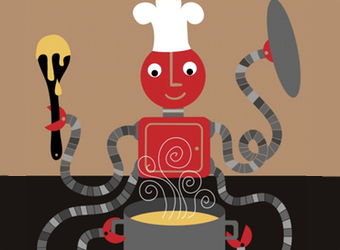Marketers need to keep channel mix anchored in the present
Share

In marketing nirvana, the channel mix concocted for any given goal achieves maximum effectiveness in engaging with its target audience, quickly translating into increased likelihood of a sale, a cross-sell opportunity, or of retaining a customer.
The results of Marketing‘s comparison between the views of 300 marketing professionals and those of 9000 Australian consumers on the topic of the current effectiveness of various channels, show that nirvana is a few incarnations away.
While marketing respondents in some industries were mostly on the money, there were substantial misconceptions in others.
Overall, all consumer demographics agreed that ‘traditional channels’ are the most effective advertising media, while the first digital channel (email marketing) appears only at number six in the rankings.
The top five channels consumers nominated were catalogues and flyers, TV advertising, press, radio advertising and personalised direct mail.
The consumer survey, published in ‘Creating connections that matter: How Australians want to hear from brands’, also found that “current marketing spend doesn’t match the consumer channel preferences reported”.
In fact, three of the top five ‘most effective’ channels chosen by consumers have seen a reduction in advertising spend over the past 12 months (with TV, outdoor, radio and online advertising spend rising).
All of this points to a difference between perception and reality on behalf of marketers in the (over)use of digital marketing; that the current balance between ‘traditional’ and ’emerging’ communications isn’t quite right.
In the banking industry, for example, the combined study found that existing customers considering additional services or products from a bank see websites, direct mail and catalogues/flyers as the most useful, while marketers preferenced email marketing.
In the not-for-profit sector, while consumers nominated websites, direct mail and TV advertising as the three most useful channels when deciding whether to switch loyalty, marketers again highly favoured email marketing.
Looking at the automotive industry, consumers said websites, TV and press advertising were the most useful channels when they’re considering a purchase, while marketers placed greater importance on the digital channels.
One reason for this anomaly may be that marketers are (understandably) constantly looking forward, searching for and trying to predict future trends. Due to this forward focus they may be acting as proxy early adopters, while consumers in the Australia Post survey naturally answered questions in terms of their current preferences.
Tracey Fellows, executive general manager of Communication Management Services at Australia Post, explains that while one of the great advantages of digital channels is their enhanced measurability and the data they can generate, when marketers are considering open rates, listenership figures or clicks, it can be easy to lose sight of the customer perspective.
“For customers, it’s all about choice,” she says. “If you are not currently using a multichannel marketing mix, you could be missing out on an opportunity to connect with different target audiences on the path to purchase.”
The other standout result from the Marketing magazine survey was the lack of perceived value towards catalogues and flyers held by marketers in some industries.
Telecommunications consumers rated catalogues and flyers, along with websites and TV advertising, as the most effective channels, while marketers in this industry pretty much disregarded printed media.
In the utilities industry, marketers rated telemarketing as an effective channel while consumers again nominated catalogues and flyers, with both groups agreeing on websites and direct mail in terms of efficacy.
Retail and fashion consumers also rated catalogues and flyers highly, while marketers in these industries nominated channels such as websites, TV and online advertising as being of more importance.
This is undoubtedly another tell-tale sign that marketers are embracing the use of ‘new’ advertising channels faster than the take-up of them by consumers.
Sure, grandma and grandpa might both be packing top-of-the-range iPads these days, but it doesn’t mean they’d rather swipe through an online catalogue than sit down with a cup of tea and a biscuit and flip through the real thing (just as they have done for decades).
The same goes for all demographics – most people at some point experience ‘screen fatigue’ and feel the need to engage with something more tactile at least occasionally.
In this sense, the research goes some way towards dispelling some of the myths that are currently influencing marketing decisions in Australia and around the globe.
While marketers certainly need to keep on top of changing technology and the evolving way in which their target markets consume media, it’s important to stay in the present.
A significant percentage of the public can remember a time when there were no mobile phones and the internet didn’t exist, so their lives don’t exist entirely around them.
It’s an absolute truth that digital communication channels can be cheaper and reach further, but their relatively recent conception means their current effectiveness and ability to translate into sales is questionable.














